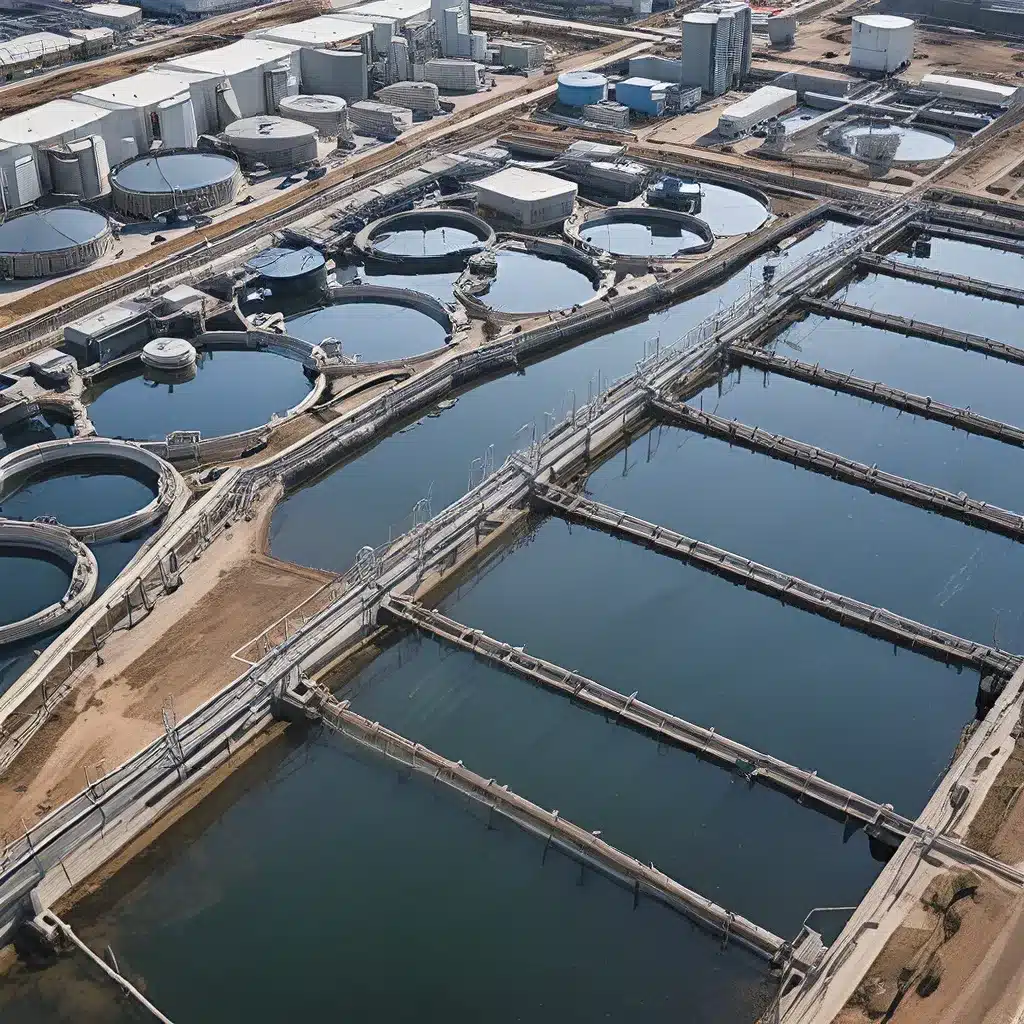
The War on Wastewater: Uncovering the Unseen Adversaries
Picture this: a bustling wastewater treatment plant, a veritable fortress against the tides of pollution. But what if I told you that the real battle isn’t just happening above the surface? What if the true enemies are lurking unseen, hidden deep within the murky depths of the treatment process?
As someone who’s spent a good chunk of my career working in the water treatment industry, I’ve seen my fair share of challenges. And let me tell you, the fight against wastewater pollution is no easy feat. It’s a complex, multifaceted war, where the lines between victory and defeat are often blurred. But the good news is, there’s hope – and it comes in the form of innovative monitoring techniques that are changing the game.
Unveiling the Invisible Foes
You see, the problem with wastewater is that it’s not just the obvious contaminants we have to worry about. Oh no, my friends, it’s the sneaky, the elusive, the downright mischievous pollutants that keep us on our toes. Things like pharmaceuticals, microplastics, and even antibiotic-resistant bacteria – they’re all lurking in our wastewater, just waiting to wreak havoc on our waterways and the environment.
And the worst part? These buggers are tough to detect using traditional monitoring methods. It’s like trying to catch a ghost – you know they’re there, but you can’t quite put your finger on them. That’s where the new and improved monitoring techniques come in.
Tech to the Rescue: Innovative Monitoring Methodologies
Let’s start with some of the latest and greatest in wastewater monitoring technology. One promising approach is the use of advanced sensors and automated systems. These little wonders can continuously monitor water quality, detecting even the slightest changes in parameters like pH, dissolved oxygen, and conductivity. It’s like having a team of super-sleuths on the job, constantly on the lookout for any suspicious activity.
But wait, there’s more! Researchers are also exploring the potential of molecular techniques, like DNA sequencing and mass spectrometry, to identify and quantify those pesky micropollutants. Imagine being able to not only detect the presence of pharmaceuticals or microplastics, but also pinpoint their exact concentrations. It’s a game-changer, I tell you!
And the best part? These advanced monitoring methods aren’t just confined to the lab. Oh no, they’re being implemented right on the front lines, at wastewater treatment plants around the world. Imagine the possibilities: a future where we can stay one step ahead of the pollutants, nipping them in the bud before they even have a chance to wreak havoc.
Connecting the Dots: Integrated Monitoring Systems
But of course, it’s not enough to just have a bunch of fancy gadgets and gizmos. The real magic happens when we start to connect the dots, integrating these innovative monitoring techniques into a cohesive system.
Imagine a world where your wastewater treatment plant is a well-oiled machine, with sensors and analyzers working in perfect harmony. Where data from multiple sources is seamlessly combined to give you a comprehensive, real-time view of what’s happening in your system. It’s like having a crystal ball that can predict the future – or at least, the future of your wastewater.
And the best part? These integrated monitoring systems aren’t just about detecting problems. They can also help you optimize your treatment processes, ensuring that you’re getting the most bang for your buck when it comes to energy and chemical usage. It’s a win-win scenario, my friends!
Putting it All Together: The Future of Wastewater Monitoring
So, there you have it – the cutting-edge world of wastewater monitoring. From advanced sensors to molecular techniques, the arsenal of tools at our disposal is growing by the day. And when we combine these innovative approaches into a cohesive, integrated system, the possibilities are truly mind-boggling.
But the real question is, what does this all mean for the future of wastewater treatment? Well, my friends, I believe we’re on the cusp of a revolution. Imagine a world where we can stay one step ahead of the pollutants, where we can continuously fine-tune our treatment processes to ensure maximum efficiency and effectiveness.
It’s a future that’s within our grasp, but it’s going to take a little elbow grease – and a whole lot of innovation. So, are you ready to join the fight against wastewater pollution? Because trust me, the battle is far from over. But with the right tools and the right mindset, I have a feeling we just might come out on top.
Oh, and by the way, if you’re looking to learn more about the cutting-edge world of water treatment, be sure to check out Inland Waters Inc. – they’re at the forefront of this revolution, and they’d be more than happy to show you the ropes. Now, if you’ll excuse me, I’ve got some pollutants to track down. Onwards and upwards, my friends!


